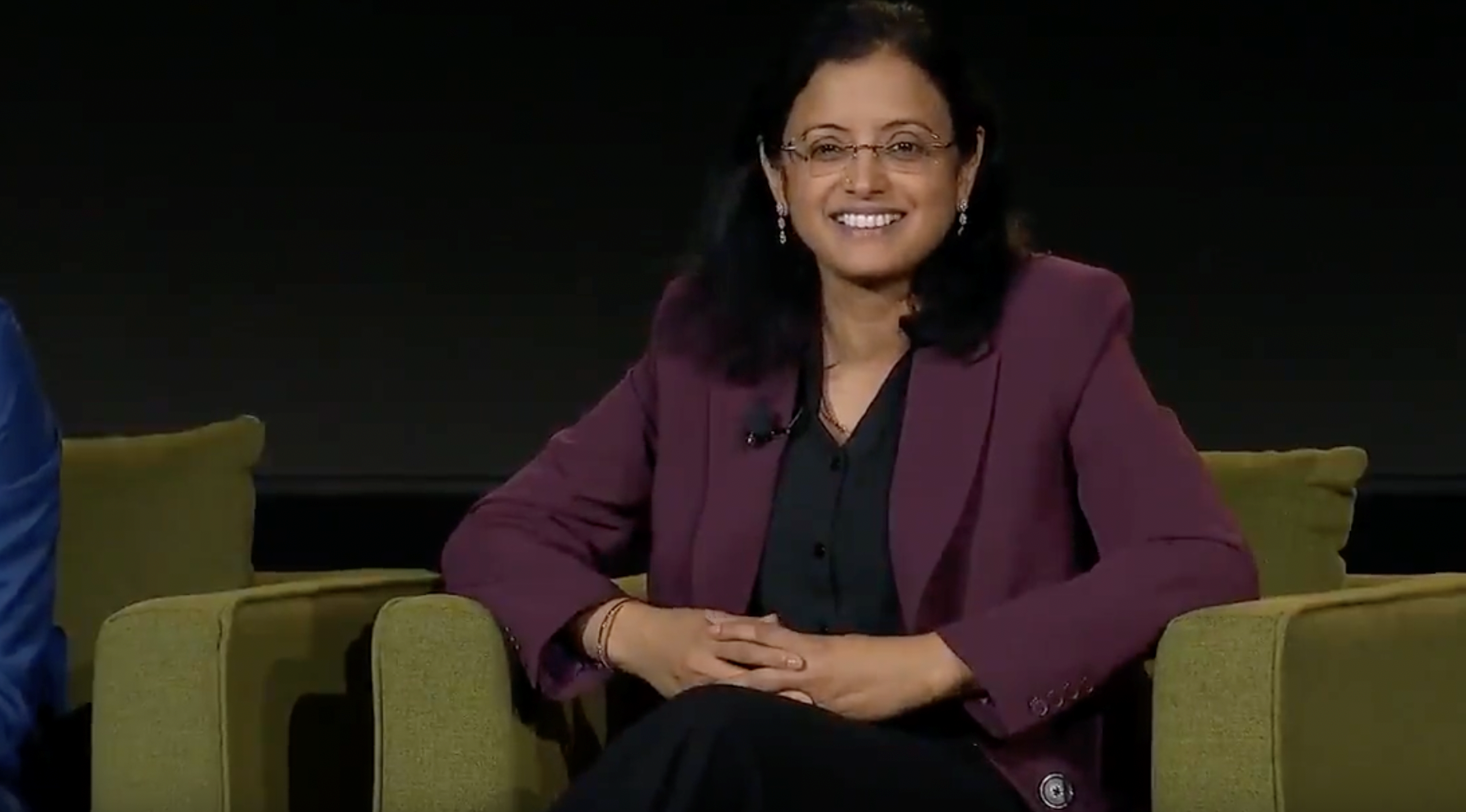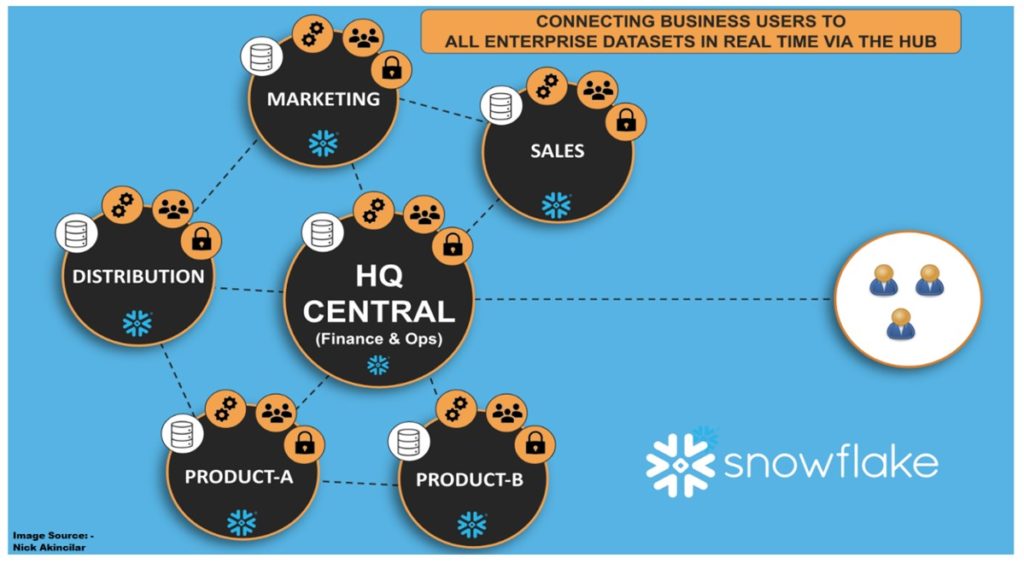“Technology is an enabler that will be a game changer in shaping society. Women have a role in how that technology is used and how society will be changed.” Aravinda Gollapudi, Head of Platform and Technology at Sage

We sat with Aravinda Gollapudi, Head of Platform and Technology at Sage, a $2B company that provides small and medium-sized businesses with finance, HR, and payroll software. At Sage, she leads a globally disbursed organization of roughly 270 employees across product, technology, release management, program management, and more. Aravinda also rounds out her technical work by serving as a board advisor for Artifcts and Loopr.
We spoke with Aravinda about technology and how women fit into this industry. Here are the highlights of that exchange.
What is your role in technology? What are you doing today?
I create an operating model for platforms, processes, and organizations to combine speed and scale. This drives market leadership and innovative solutions while accelerating velocity through organizational structure. I do this by leading the technology organization for cloud-native financial services for midmarket at Sage while also driving the product roadmap and strategy for platform as a business unit leader.
I also advise, mentor, and partner with CEOs of startup companies as a board advisor around technologies like AI/ML, SAAS, Cloud, Organizational strategy, and business models. I also help bring my network together to drive go-to-market activities.
I have a unique opportunity with my role to drive the convergence of business outcomes and technology/investment enablers by Identifying, blueprinting, and leading solutions to market – for today, tomorrow, and the future.
How did you get started in technology?
I think my inclination toward technology may be attributed to my interest in mathematics. I am old enough to appreciate how personal computers fueled the exponential adoption of technology!
The current generation of technologists have immense computing power at their fingertips, but I started my foray into technology when I had to use UNIX servers to do my work.
Early in my career, I wanted to go into academia and research in physics. I was working on research work in quantum optics after I graduated with my Master’s in Physics. I spent a lot of time with programming models in Fortran language, which is used in scientific computing. Fortran introduced me to computer programming.
My interest in technology got stronger while I was pursuing my second Masters in Computer Engineering. Although I was taking coursework on hardware and software, I gravitated toward software programming.
What can you tell us about the people who paved the way for you? How did mentors factor into your success?
A big part of my career was shaped very early by my parents, who are both teachers. They instilled the importance of learning and hard work. My dad was a teacher and a principal and was a role model in raising the bar on work ethic, discipline, respect, and courage. My mom, through her multiple master’s degrees and pursuit of continual learning, showed us that it was important to keep learning.
Later in my career, I was fortunate to have the support of my managers, mentors, and colleagues. I leveraged them to learn the craft around software but also around organizational design, product strategy, and overall leadership. I am fortunate to have mentors who challenged me to be better and watch for my blindsides. I still lean on them to this day. A few of my mentors include Christine Heckart, Jeff Collins, Himanshu Baxi, Keith Olsen, and Kathleen Wilson. They have been my managers or mentors who gave me candid feedback, motivated me, and helped me grow my leadership skills.
I would be remiss if I didn’t mention the support and encouragement from my husband! He has always pushed me to take on challenges and supported me while we both balanced family and work.
How can we improve tech for women?
If we want to improve tech for women, we must invest in girls in technology. Hiring managers need to overcome unconscious bias and create early career opportunities for girls.
Mentorship is crucial: We need to acknowledge that the learning and career path is often different for women. Having a strong mentor irrespective of gender helps women learn how to deal with situational issues and career development. Women leaders who can take on this mantle to share their experience and mentor rising stars will help those who do not have a straight journey line in their careers.
Given the smaller percentage of women represented in technology, I am happy to see the trend in the recent past elevating this topic at all levels. By becoming mentors, diversity champions can make a real impact on improving the trend.
We need to invest in allyship and mentorship and elevate the importance of gender diversity. For example, with board searches, organizations like 50/50 Women on Boards elevate the value of having gender diversity and work on legislative support. We need more of that or else we leave behind half the population.

What is one thing you wish more people knew to support women in technology?
I wish more people understood the impact of unconscious bias. Most people do not intend to be biased, but human nature makes us lean toward certain decisions or actions. The tech industry would greatly improve if more people took simple steps to avoid their unconscious bias, like making decisions in several settings (avoiding the time of day impact), ensuring that names and accents don’t impact hiring decisions, and investing in diversity.
What’s around the corner in technology? What trends excite you?
There are three significant trends that excite me right now: Artificial Intelligence/Machine Learning, data, and sustainable tech.
We are living in the world of AI Everywhere and there is more to come. Five out of six Americans use AI services daily. I expect AI to keep shaping automation and intelligent interactions, and drive efficiency.
This is also an exciting time to work with data. We are moving towards a hyper-connected digital world, and the old way of doing things required us to harness vast amounts of digital data from siloed sources. The trend is moving toward driving networks and connections that will fuel more complex machine-to-machine interactions. This data connectivity will impact our lives at home, schools, offices, etc., and will dramatically change how we conduct business.
And I am particularly excited about trends in sustainable technology. We will see more investment in technologies that reduce the impact of compute-hungry technology. I’m anticipating an evolution to more environmentally sustainable investments, which will help us reduce the usage of wasteful resources such as data centers, storage, and computing.
What does the tech world need now more than ever?
The tech world needs better data security and more diversity.
Data is highly accessible in our lives (in part thanks to social media), so we need more investment in privacy and security. We already have seen the impact of this need across personal lives, the political landscape, and business.
For too long, we have not invested enough in diversity, so we have a lot of catching up to do. In the world of technology, we are woefully behind in diversity in leadership positions, particularly in the US tech sector where about 20% of technology leadership positions are held by women.
Data is ubiquitous, tools and frameworks are at our fingertips, and technology is covered earlier in schools, so we are seeing a younger starting age for people getting involved in building technology products/applications. We’ve reduced the barrier of entry (languages, frameworks, low code/no-code tools sets) to make it easier to adopt technology without the overhead of complex coursework. With all these improvements, why are we still so behind on diversity? In the US tech sector, 62% of jobs are held by white Americans. Asian Americans hold 20% of jobs. Latinx Americans hold 8% of jobs. Black Americans hold 7% of jobs. Only 26.7% of tech jobs are held by women.
We have the tools and training. Now we need to change the profile of the workforce to include a more diverse community.
What’s one piece of advice that you would share with anyone reading this?
For women who are reading this, I strongly encourage you to avoid self-doubt and gain confidence by arming yourselves with knowledge and mentors. By bringing our best selves forward, we can focus on opportunities and not obstacles. Technology is an enabler that will be a game changer in shaping society. Women have a role in how that technology is used and how society will be changed.
Additional Resources
- 10 tips to Reduce Unconscious Bias at Work
- 50/50 Women on Boards
- Women in Technology – Meet Claudia Rostagnol
- Women in Technology – Meet Tanya Faddoul
- Women’s History Month – Let’s Make Tech More Inclusive





















